Karnataka – The Bangalore stampede that occurred during Royal Challengers Bengaluru’s maiden IPL title celebration has shocked the cricket community and raised serious concerns about event management and crowd control. What should have been a joyous celebration of RCB’s historic victory turned into a devastating tragedy when 11 people lost their lives and 47 others sustained injuries outside the M Chinnaswamy Stadium on Wednesday evening.
The Bangalore stampede unfolded as hundreds of thousands of cricket enthusiasts gathered to catch a glimpse of their victorious heroes who had clinched their first IPL trophy the previous night. The massive crowd that assembled far exceeded all expectations, with estimates suggesting that between 200,000 to 300,000 people converged on the stadium, despite its capacity being only 35,000.
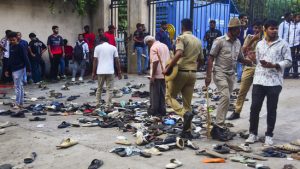
Overwhelming Crowds Lead to Chaos
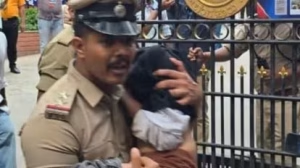
The Bangalore stampede occurred between 3:30 PM and 5:00 PM when the situation spiraled out of control. Fans had been gathering since the afternoon, with many arriving based on conflicting information about ticket availability. Initially, supporters were told that passes could be purchased, but later learned that tickets were being distributed at the stadium itself, leading to massive crowds converging on the venue.
A senior police officer, speaking on condition of anonymity, explained the challenges faced during the Bangalore stampede: “The crowd was beyond our control. Even though we had deployed force, it was too much. We had to resort to lathi charge at some points. The problem was the stadium gates were narrow, and the pressure of the crowd caused the tragedy.”
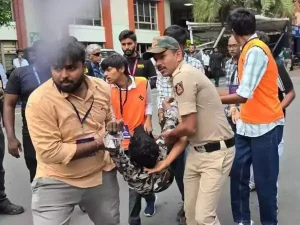

The situation deteriorated rapidly as desperate fans climbed over cars and scaled trees in their attempts to gain entry. When police closed all gates due to the overwhelming numbers, the pressure from the massive crowd created the dangerous conditions that led to the fatal Bangalore stampede.
Victims and Casualties
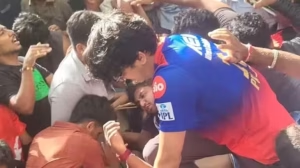
The Bangalore stampede claimed lives across different age groups, with victims including a software engineer, a 14-year-old girl, and an engineering student. Many of the deceased were young people, according to Chief Minister Siddaramaiah, highlighting the tragic loss of promising lives during what should have been a celebratory occasion.
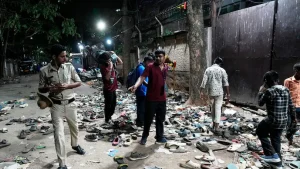

Medical facilities responded swiftly to the Bangalore stampede casualties. At Vydehi Hospital, resident medical officer Humera Sayeeda confirmed that four people were brought dead, with twelve others sustaining minor injuries. The primary cause of death appeared to be suffocation, while seven additional deaths were reported at Bowring Hospital.
Eyewitness accounts painted a grim picture of the Bangalore stampede. Sathish Bhat, a civil engineer who arrived around 5 PM, described the scene: “The crowd swelled to thousands near Gate 3 and surged forward. Many fell to the ground and were trampled. There were very few police around, and despite announcements asking people to go home and watch the event on TV, no one listened.”
Administrative Response and Investigation


Following the Bangalore stampede, government officials acknowledged the severity of the situation and the need for accountability. Chief Minister Siddaramaiah expressed deep regret over the incident, stating: “Such an incident should never have happened, and the government deeply regrets it.” He ordered a magisterial probe with a 15-day deadline for the investigation report.
Deputy Chief Minister DK Shivakumar described the crowd as “absolutely uncontrollable,” emphasizing the unprecedented nature of the turnout that contributed to the Bangalore stampede. The authorities had prepared for a larger-than-usual crowd but were completely unprepared for the massive gathering that materialized.
The Bangalore stampede highlighted significant gaps in event planning and crowd management. A planned roadshow between Vidhana Soudha and the stadium had been canceled earlier in the day due to security concerns, but this precautionary measure proved insufficient to prevent the tragedy.
Organizational Responsibility and Compensation
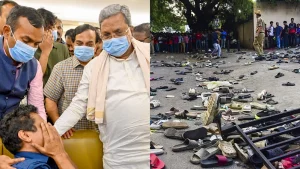

The Bangalore stampede raised questions about the roles and responsibilities of various organizations involved in the event. The Karnataka State Cricket Association (KSCA), which manages the stadium, expressed sadness over the incident. However, KSCA clarified that the event was organized by RCB, while RCB stated they followed guidance from local administration upon learning of the situation.
In response to the Bangalore stampede, compensation was announced for the victims’ families. The RCB-KSCA combination offered ₹5 lakh, while the government pledged ₹10 lakh to each affected family, though monetary compensation could hardly address the magnitude of the loss.
The Board of Control for Cricket in India (BCCI) described the Bangalore stampede as shocking, with secretary Devajit Saikia commenting: “This is a negative side of popularity. People are crazy for their cricketers. The organisers should have planned it better.”
Political Reactions and Blame Game
The Bangalore stampede inevitably drew political responses, with the BJP blaming the Congress government for administrative failure. Karnataka BJP chief B Y Vijayendra called the incident “a damning indictment of the Congress government” resulting from mismanagement.


However, Chief Minister Siddaramaiah attempted to keep politics out of the tragedy, stating: “I do not want to play politics in this case. That is why even though there was an unexpected crowd, we have ordered a magisterial probe.”
Prime Minister Narendra Modi described the Bangalore stampede as “absolutely heartrending,” expressing condolences and prayers for the injured: “In this tragic hour, my thoughts are with all those who have lost their loved ones. I pray that those who are injured have a speedy recovery.”
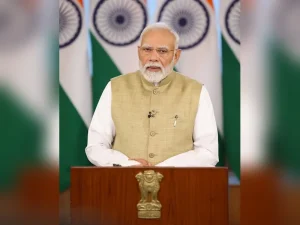

Event Timeline and Context
The Bangalore stampede occurred on a day that began with celebration. RCB had broken an 18-year-long jinx by winning their first IPL title on Tuesday night, defeating Punjab Kings by 6 runs. The team landed at HAL airport at 2:35 PM and was received by Deputy Chief Minister Shivakumar.
A successful felicitation ceremony had been held at Vidhana Soudha around 4:30 PM, where nearly one lakh people gathered without incident due to adequate open space. The contrast with the Bangalore stampede at the stadium highlighted how venue design and space management critically impact crowd safety.
Despite the unfolding tragedy outside, the celebration inside the stadium continued initially, as officials were reportedly unaware of the Bangalore stampede until later. IPL chairman Arun Dhumal later clarified this timeline, explaining the delay in information reaching stadium officials.
Lessons and Moving Forward
The Bangalore stampede serves as a stark reminder of the importance of proper crowd management and event planning, especially for high-profile sporting celebrations. The tragedy underscores the need for better coordination between organizers, security forces, and local administration to prevent such incidents in the future.
As investigations continue into the Bangalore stampede, the cricket community and authorities must work together to ensure that fan celebrations never again turn into such devastating tragedies, honoring the memory of those lost while protecting future generations of cricket enthusiasts.

